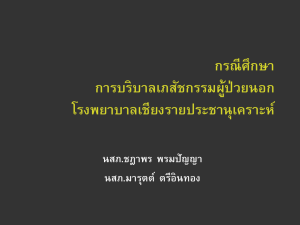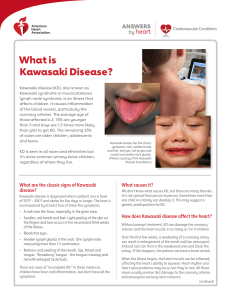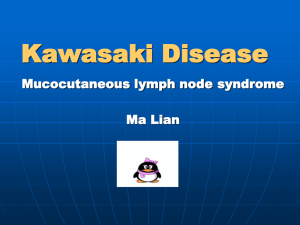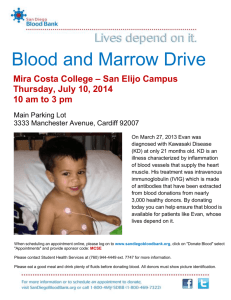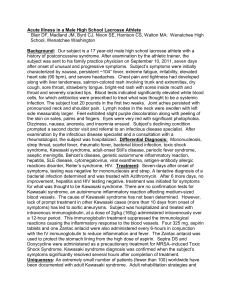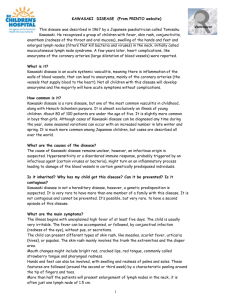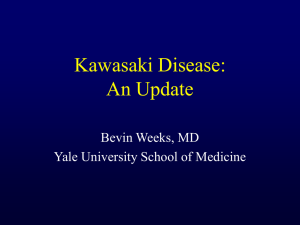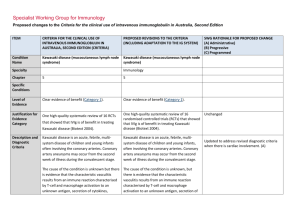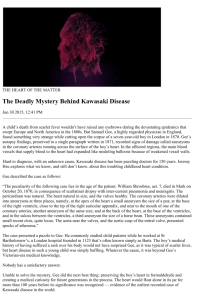Role of Aspirin therapy in the Acute Treatment of Kawasaki Disease
advertisement
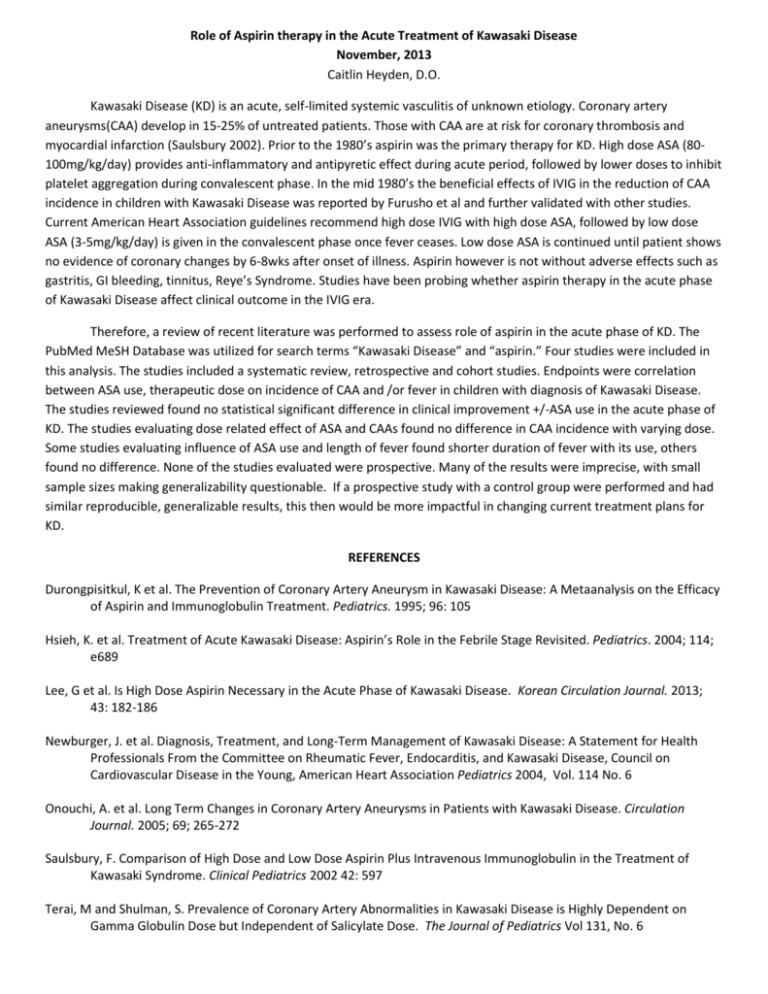
Role of Aspirin therapy in the Acute Treatment of Kawasaki Disease November, 2013 Caitlin Heyden, D.O. Kawasaki Disease (KD) is an acute, self-limited systemic vasculitis of unknown etiology. Coronary artery aneurysms(CAA) develop in 15-25% of untreated patients. Those with CAA are at risk for coronary thrombosis and myocardial infarction (Saulsbury 2002). Prior to the 1980’s aspirin was the primary therapy for KD. High dose ASA (80100mg/kg/day) provides anti-inflammatory and antipyretic effect during acute period, followed by lower doses to inhibit platelet aggregation during convalescent phase. In the mid 1980’s the beneficial effects of IVIG in the reduction of CAA incidence in children with Kawasaki Disease was reported by Furusho et al and further validated with other studies. Current American Heart Association guidelines recommend high dose IVIG with high dose ASA, followed by low dose ASA (3-5mg/kg/day) is given in the convalescent phase once fever ceases. Low dose ASA is continued until patient shows no evidence of coronary changes by 6-8wks after onset of illness. Aspirin however is not without adverse effects such as gastritis, GI bleeding, tinnitus, Reye’s Syndrome. Studies have been probing whether aspirin therapy in the acute phase of Kawasaki Disease affect clinical outcome in the IVIG era. Therefore, a review of recent literature was performed to assess role of aspirin in the acute phase of KD. The PubMed MeSH Database was utilized for search terms “Kawasaki Disease” and “aspirin.” Four studies were included in this analysis. The studies included a systematic review, retrospective and cohort studies. Endpoints were correlation between ASA use, therapeutic dose on incidence of CAA and /or fever in children with diagnosis of Kawasaki Disease. The studies reviewed found no statistical significant difference in clinical improvement +/-ASA use in the acute phase of KD. The studies evaluating dose related effect of ASA and CAAs found no difference in CAA incidence with varying dose. Some studies evaluating influence of ASA use and length of fever found shorter duration of fever with its use, others found no difference. None of the studies evaluated were prospective. Many of the results were imprecise, with small sample sizes making generalizability questionable. If a prospective study with a control group were performed and had similar reproducible, generalizable results, this then would be more impactful in changing current treatment plans for KD. REFERENCES Durongpisitkul, K et al. The Prevention of Coronary Artery Aneurysm in Kawasaki Disease: A Metaanalysis on the Efficacy of Aspirin and Immunoglobulin Treatment. Pediatrics. 1995; 96: 105 Hsieh, K. et al. Treatment of Acute Kawasaki Disease: Aspirin’s Role in the Febrile Stage Revisited. Pediatrics. 2004; 114; e689 Lee, G et al. Is High Dose Aspirin Necessary in the Acute Phase of Kawasaki Disease. Korean Circulation Journal. 2013; 43: 182-186 Newburger, J. et al. Diagnosis, Treatment, and Long-Term Management of Kawasaki Disease: A Statement for Health Professionals From the Committee on Rheumatic Fever, Endocarditis, and Kawasaki Disease, Council on Cardiovascular Disease in the Young, American Heart Association Pediatrics 2004, Vol. 114 No. 6 Onouchi, A. et al. Long Term Changes in Coronary Artery Aneurysms in Patients with Kawasaki Disease. Circulation Journal. 2005; 69; 265-272 Saulsbury, F. Comparison of High Dose and Low Dose Aspirin Plus Intravenous Immunoglobulin in the Treatment of Kawasaki Syndrome. Clinical Pediatrics 2002 42: 597 Terai, M and Shulman, S. Prevalence of Coronary Artery Abnormalities in Kawasaki Disease is Highly Dependent on Gamma Globulin Dose but Independent of Salicylate Dose. The Journal of Pediatrics Vol 131, No. 6
